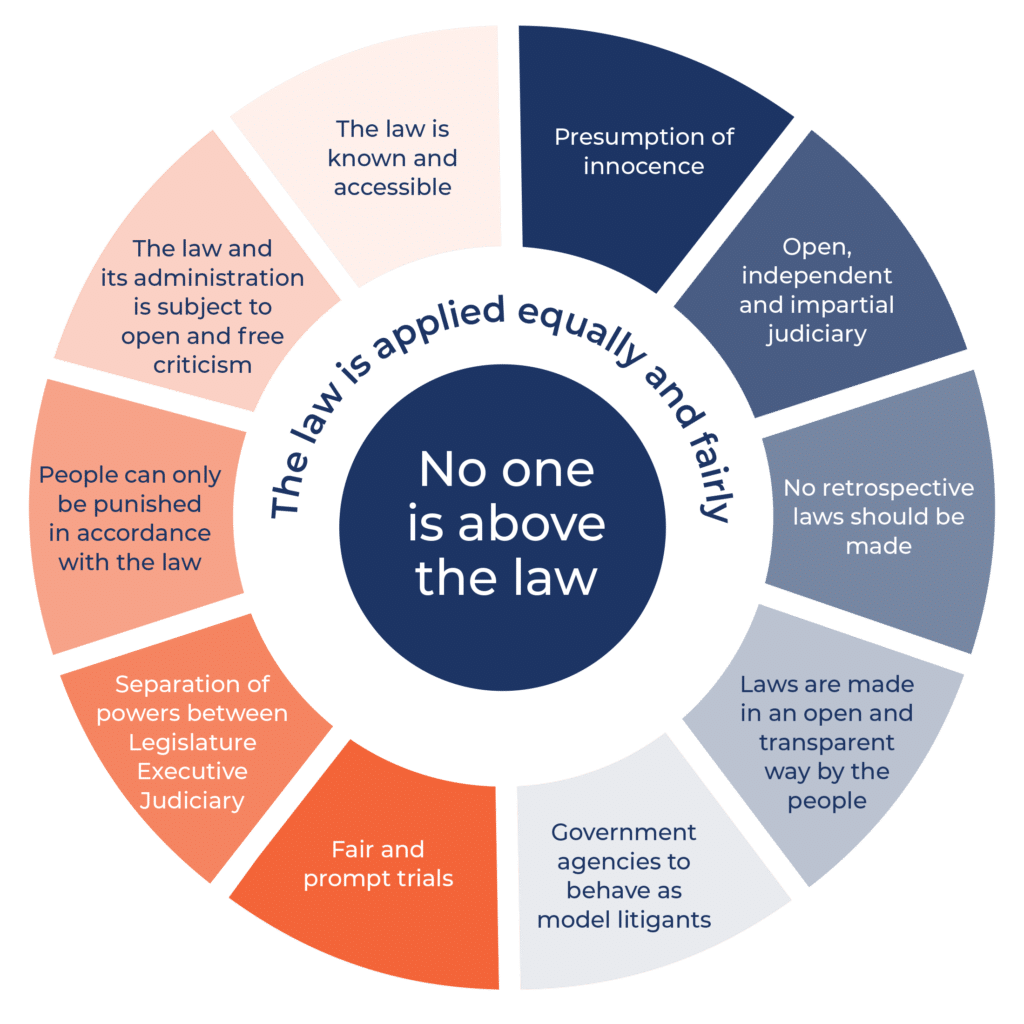Key Legal Points:
- Mr Ron Medich was found guilty of instigating, directing and funding the murder of Mr Michael McGurk and intimidation of his widow.
- Although he didn’t do the the physical act of pulling the trigger of the gun which murdered Mr McGurk, Mr Medich was the person with the motive.
- Mr Medich was ‘the brains’ behind the contract killing of Mr McGurk.
- The Parity Principle was used in the sentencing Mr Ron Medich who was member of a ‘joint criminal enterprise’ formed to murder Mr Michael McGurk.
- The victim impact statements of Mrs McGurk and her children played an important role in the judge’s decision making. s28(4) of the Sentencing Act allows the prosecutor in murder trials to tender Victim Impact Statements (VIS).
This case note summarises the sentencing decision of Justice Bellew of the NSW Supreme Court and outlines the relevant facts and submissions that led to the conviction and sentencing of Ron Medich for the murder of Mr McGurk
Facts of the Case :The timeline of events
The background of the case which led to the murder of Mr Michael McGurk involved long term friendships, business dealings, soured relationships and costly court battles. The timeline of events is set out below:
1980
- In 1980 Mr Medich met Mr Fortunato ‘Lucky’ Gattellari. They became very good friends and their friendship grew over the years with both parties enjoying successful business ventures together. Mr Gattellari was Mr Medich’s close and trusted confidante
2006
- Mr Medich met Mr McGurk. They started to develop a close personal and business association
2007
- A series of business interests between Mr Medich and Mr McGurk went very sour. These business interests were worth a lot of money and included Amazing Loans Pty Ltd, property interests at Point Piper, Mowbray and Gerroa and loans of more than $4.4M. These matters result in continuing, very lengthy and costly legal battles which tied up a lot of Mr Medich’s property assets
2009
- The continuing litigation made Mr Medich became ‘incredibly angry’ with Mr McGurk
- At the request of Mr Medich, his friend Mr Gattellari hired Mr Haissam Safetli to shoot Mr McGurk
- On 3/09/2009 Haissam Safetli accompanied by Mr Christopher Chafic Estephan committed an execution style murder on Mr McGurk outside his home in front of his young son
- Mr Medich planned his alibi so that he could not be linked to the actual shooting
2010
- The police started telephone surveillance on Mr Medich and Mr Gattellari. They intercepted Mr Medich ordering the intimidation of Mrs McGurk
- 8/8 – Mr Safetli went to the McGurk home and threatened Mrs McGurk. The police were in the home of Mrs McGurk and taped the incident
- Mr Medich planned his alibi to be ‘out of town’ so that he could not be linked to the intimidation
- 13/10 – Mr Gattellari, Mr Senad Kaminic, Mr Haissam Safetli and Mr Christopher Estephan were arrested over the murder of Mr McGurk
- 27/10 – Mr Medich was charged with Mr McGurk’s murder and the intimidation of his widow
- 17/10 – Mr Medich was granted bail
2013
- 10/05 – Mr Gattellari was considered to be a ‘conduit’ between Mr Medich and the Mr Hassaim Safetli who was convicted of the actual execution murder of Mr McGurk. Mr Gatellari paid the money on behalf of Mr Medich to Mr Safetli. Mr Gatellari was sentenced to a maximum of 25 years gaol.
- Mr Gatellari received a 60% discount for pleading guilty to his part in organising the murder, and agreeing to become a police witness against Mr Medich thus reducing his sentence to 10 years non parole
- 10/05 – Mr Kaminic, Gatterllari’s driver and ‘standover’ man was sentenced to at least two years six months gaol after receiving 50% discount for pleading guilty to being an accessory after the fact
- 6/08 – Mr Medich’s committal hearing began
- 9/08 – Mr Hassaim Safetli, was jailed for 22 years for the execution style murder of Mr McGurk and the intimidation of his widow. His sentence was reduced by 60% to 7 years non parole after pleading guilty and agreeing to be a Crown witness
- 27/09 – Mr Medich was ordered to stand trial.
2014
- 30/04 – Mr Estephan, Safetli’s getaway driver, was sentenced to at least five years after admitting being an accessory after the fact and firearm offences
2016
- 7/07 – The jury was discharged before Mr Medich’s trial starts after extensive new material was handed to the defence by the prosecution
- 21/12 – Mr Gattellari, and others, were charged with conspiring to defraud Mr Medich allegedly involving attempts to extort money from him in return for Mr Gattellari’s silence
2017
- 30/01 – Mr Medich’s murder and intimidation trial commenced in the Supreme Court
- 13/04 – The jury was discharged after being unable to reach a verdict
2018
- 30/01 – Mr Medich’s retrial starts
- 23/04 – After deliberating for 5 days the jury found Mr Medich guilty of of contracting and financing the murder of Mr McGurk and the intimidation of Mrs McGurk.
- 18/06 – Mr Bassam Safetli is given a nine-month suspended jail term and put on a 12-month bond for concealing serious indictable offences in not telling police of the involvement of his brother, Haissam Safetli, in the murder plot and the murder.
Sentencing Considerations
On 21/06/18 Judge Bellew handed down his sentence to Mr Medich for the murder of Michael McGurk and the intimidation of his widow. He outlined the arguments presented by the Crown and defence when delivering his sentence. All sentencing decision in NSW are governed by the Crimes (Sentencing Procedure) Act 1999
Section 3A The Purpose of Sentencing
Under s3A of the Sentencing Act Judge Bellew had to consider the following matters when sentencing:
The Purpose for which a court may impose a sentence on an offence are as follows:
- To ensure that the offender is adequately punished for an offence
- To prevent crime by deterring the offence and other persons from committing similar offences
- To protect the community from the offence
- To promote the rehabilitation of an offence
- To make the offender accountable for his actions
- To denounce the conduct of the offender.
- To recognise the harm done to the victim of crime and the community.
Crown Argument
The Crown prosecutor argued that due to the heinous nature of the crime, Mr Medich should receive a life sentence.
The Crown had a strong case and many of their arguments were undisputed. Their arguments included that Mr Medich had:
- shown a complete disregard for the common community value that human life is sacred
- decided to turn away from using the resources of the court to solve his legal disputes with Mr McGurk. He demonstrated complete disregard for the rule of law and respect for any legal authority by diverting his available financial resources to fund a contract killing and intimidation
- sanctioned the use of a gun for the murder of Mr McGurk
- allowed the contract killing of Mr McGurk to be committed in front of his young child
- been shown to have the only motive for the murder and intimidation. If he not planned and funded the crime it would not have happened
- refused to acknowledge his behaviour was wrong by pleading not guilty
- demonstrated premediation to murder by creating alibis so as not to be anywhere near the crimes scenes
- been unable to demonstrate any prior contribution to the community.
Victim Impact Statements
The Crown tendered Victim Impact Statements (VIS) by Mrs McGurk and her children. Justice Bellew did not release the statements to the public due to the sensitive nature of them but said:
I have obviously read each of the victim impact statements carefully. Given the orders I have made, I obviously do not propose to refer to their content. However, it would not be overstating the position to say that as a consequence of the events I have described, the lives of each of Mrs McGurk and her children will never be the same. Mr McGurk’s children were very young at the time of his murder. The eldest was 12 years of age, and the youngest was 8. On the evening of 3 September 2009, each of them was shockingly confronted with the violent, sudden and unexpected death of their obviously much-loved father [14]
Section s28(4) of the Crimes Act states:
A Victim impact statement given by a family may, on the application of the prosecutor and if the court considers it appropriate to do so, be considered and taken into account by a court.
The sentencing judgement was was very compelling in its opening description of Mr McGurk’s child being at the scene of the murder, witnessing his father’s murder and screaming:
‘Mummy, mummy, daddy’s been hurt. There was a pop and there’s blood’.
The Crown submitted that the VIS should allowed in the sentencing as they showed the harm done to the victim and therefore the community satisfying s3A(g) of the Act. The Defence Council conceded that the VIS in this case were very persuasive. They tried to oppose the them being used as a consideration in sentencing.
Judge Bellew reviewed case law in the area of VIS. He found there was general agreement that VIS should be allowed to be considered as part of sentencing in murder trials and in this murder trial. He agreed with previous judgements that took the view that although the nature and degree of harm may vary, any case of murder is harmful to the community.
In this case he described the harm as having ‘catastrophic’ consequences to the family. There was therefore harm to the community.
Defence Argument
Mr Medich maintained his innocence and pleaded not guilty in the originating case. His lawyer offered only the following arguments to the court in regard to his sentencing:
- His age being 70 years old
- He had a clean criminal record
- He was unlikely to reoffend
However, he was unable to provide any evidence of his good character and contribution to the community.
Judicial Consideration – The Parity Principle
The Parity Principle means that the participants in a joint criminal enterprise are viewed as equally responsible for the acts committed in carrying out the crimes, irrespective of who committed the the crime. The degree of involvement, criminality and moral behaviour of all of the offenders in the joint criminal enterprise is weighed up when sentencing.
Judge Bellew had to ensure the sentences given to the other co-offenders and the sentence to be imposed on Mr Medich were proportionate.
The two most serious co-offenders were Mr Gattellari and Mr Safetli.
Mr Gatellari was initially sentenced to 25 years imprisonment for his role as ‘conduit’ between Mr Medich and Mr Safetli. However, due to his early guilty plea combined with agreeing to give evidence against Mr Medich, his sentences were greatly reduced to 10 years. The court also noted in Mr Gattellari’s case that he had ‘contributed’ positively to the community and had shown genuine ‘contrition’ and remorse for his involvement.
In the case of Mr Safetli, who was found guilty of the actual shooting and intimidation, he was initially sentenced to 22 years reduced to 7 years for his early guilty plea and agreeing to give evidence against Mr Medich. The sentencing judge also took into account that Mr Safetli had a very deprived background, with a history of psychological and psychiatric disorders which had impacted on his ability to morally understand right from wrong.
Judge Bellew decided that Mr Medich was the ‘director’ ‘financier’, and ‘initiator’ of the joint criminal enterprise and that without him there would have been no murder.
He was the only one with a motive for Mr McGurk’s murder. Importantly he showed in the face of overwhelming evidence no remorse. Therefore, Judge Bellew determined in regard to the Parity Principle Mr Medich should receive a longer sentence.
Mr Medich was not given a life sentence as requested by the Crown. However, as he received a term of 39 years in gaol he will most likely die in prison.
Discussion Questions
Victim Impact Statements
In the past victims of crime and their families had little input in the criminal trial process and sentencing in particular.
Victim Impact Statements (VIS) have been gradually given more strength particularly in cases where the offender is found to be guilty beyond reasonable doubt.
The importance of VIS is evidence of the degree of devastation to the victim is the degree of impact to the community. This will influence sentencing.
A victim impact statement is a written statement about the impact that a crime has had on the victim, once an offender has been convicted and is to be sentenced. A victim impact statement can provide the victim with an opportunity to participate in the criminal justice process by informing the court about the effects of the crime on them
If victims and family members write VIS they may have to be prepared to be cross examined about the facts in their statement by the convicted person’s lawyer. Although this does not frequently occur in most cases.
Read this guide to VIS from the Office of the Department of Public Prosecutions and answer the questions below.
- Does the inclusion of VIS in sentencing consideration balance the rights of victims and offenders?
- Should the credibility and character of the person who writes a VIS be questioned?
- Should the facts which the VIS says are true be proved beyond reasonable doubt?
- Should children who write VIS be cross examined?
- Is it appropriate for a Judge to not publically release VIS provided to the court?
Joint Criminal Enterprise
A joint criminal enterprise (JCE) in NSW is not defined in the statute law. It is found in the common law. A JCE can be when two or more people agree to commit a particular offence. In the this case that crime was the murder of Mr McGurk.
Further questions
- Who is more to blame the person who thinks of the crime or the person who does the crime?
- In sentencing an offender who was part of a JCE what factors should a judge consider?
- Do you think Mr Gattellari have any motive?
- Should Mr Medich receive a longer sentence than Mr Gattellari of Mr Safetli?
- Were the sentences too lenient for the other co-offenders?
- How important is the evidence of the character of the offender when sentencing?
Resources
Victims and victim impact statements
https://www.judcom.nsw.gov.au/publications/benchbks/sentencing/victims.html
District Court rejects Bassam Safetli’s attempt to throw out accessory charges in Michael McGurk murder
https://www.smh.com.au/national/nsw/district-court-rejects-bassam-safetlis-attempt-to-throw-out-accessory-charges-in-michael-mcgurk-murder-20171114-gzl3du.html
Christopher Estephan jailed for five years over McGurk murder
https://www.smh.com.au/national/nsw/christopher-estephan-jailed-for-five-years-over-mcgurk-murder-20140430-zr1r7.html
Man sentenced to seven years’ jail over 2009 murder of Michael McGurk
http://www.abc.net.au/news/2013-08-09/man-sentenced-to-seven-years-jail-of-mcgurk-murder/4876846
Parity
https://www.judcom.nsw.gov.au/publications/benchbks/sentencing/parity.html
Parity Principle
http://criminalnotebook.ca/index.php/Parity_Principle
Joint Criminal Enterprise
https://www.timebase.com.au/news/2017/AT04149-article.html
Joint criminal enterprise
https://www.legalaid.nsw.gov.au/publications/factsheets-and-resources/burn-movie/joint-criminal-enterprise
Sentencing in NSW
https://www.sydneycriminallawyers.com.au/criminal/resources/general-sentencing-principles/



